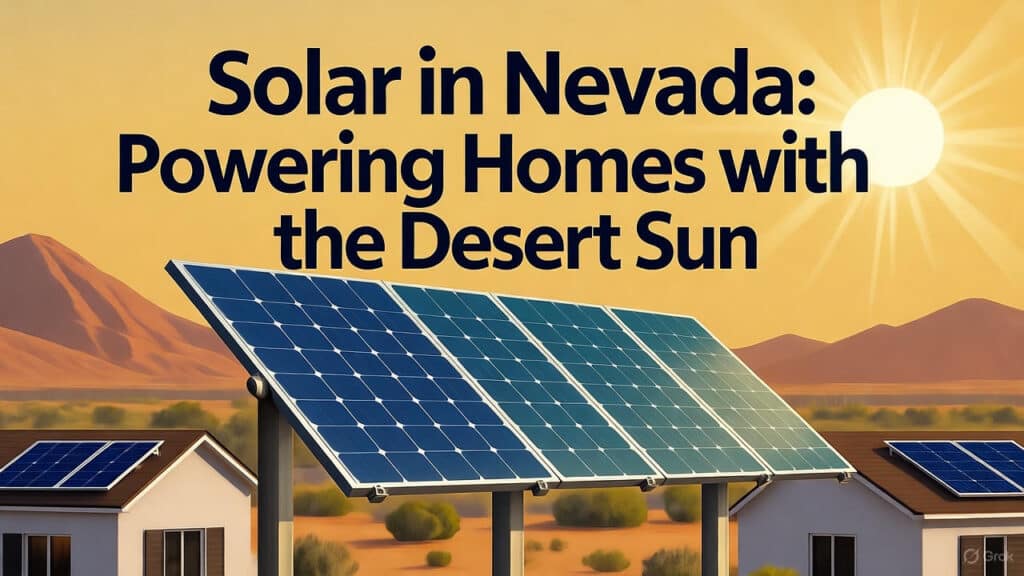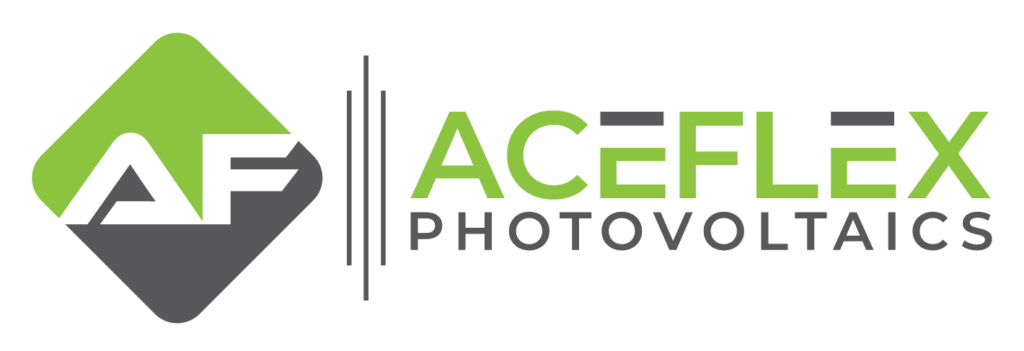📦 Fast Delivery – Order Now!
💸 Shop Safely – 100% Money-Back Guarantee
👨🔧 Lifetime Customer Support
📦 Fast Delivery – Order Now!
💸 Shop Safely – 100% Money-Back Guarantee
👨🔧 Lifetime Customer Support
Nevada, known for its endless sunshine and vast deserts, is a prime location for harnessing solar energy. With the urgent need to address rising energy costs and environmental challenges, solar power offers a sustainable solution for the state’s residents and businesses. This blog dives into why Nevada is a solar powerhouse and how you can join the movement toward a greener future.

Nevada stands out as a prime location for solar energy deployment due to its exceptional solar irradiance, ranking among the sunniest states in the U.S. With over 300 days of sunshine annually, residents and businesses can generate high energy yields from relatively small system footprints, maximizing return on investment. The state’s progressive renewable energy policies—including net metering incentives and property tax abatements for solar installations—further enhance financial viability. Additionally, Nevada’s rapidly growing population and rising utility rates make energy independence increasingly attractive. Whether for residential rooftops or large-scale solar farms, Nevada offers the perfect convergence of climate, regulation, and economic opportunity for solar adoption.
As of 2025, solar energy has become a cornerstone of Nevada’s power landscape, accounting for 27.3% of the state’s total electricity generation and ranking it fifth nationally in solar output. The state boasts over 4,000 MW of installed solar capacity, with utility-scale projects like the expansive Copper Mountain Solar Facility—now at 782.5 MW—powering hundreds of thousands of homes alongside innovative developments such as the Gemini Solar Project. Residential adoption continues to thrive, particularly in urban areas like Las Vegas, which ranks among the top U.S. cities for per capita solar installations, driven by federal incentives, net metering policies, and the state’s renewable portfolio standard aiming for 50% clean energy by 2030.
| Year | Installed Capacity (MW) | Annual Growth (%) |
|---|---|---|
| 2013 | 105 | – |
| 2015 | 129 | 10.9 |
| 2017 | 1,000 | 127.2 |
| 2020 | 2,500 | 20.8 |
| 2023 | 3,872 | 10.0 |
| 2024 | 4,200 | 8.5 |
| 2025 | 4,500 | 7.1 |
Soruce: EIA’s Nevada State Energy Profile
Solar energy in Nevada faces several hurdles that require careful consideration to ensure its success, particularly given the state’s unique desert environment. These challenges include:
Addressing these obstacles through proper planning, durable installations, and expert guidance is key to maximizing the benefits of solar power in Nevada.
Going solar in Nevada is a smart move for homeowners, but a little preparation goes a long way toward maximizing benefits. Start by reviewing your current energy usage and checking how much roof space or available land you have for panels—south-facing roofs with minimal shading deliver the best performance. It’s also important to understand your utility provider’s net metering policy, as this determines how much credit you’ll receive for excess power sent back to the grid.
Nevada homeowners can take advantage of federal tax incentives, and in some cases, local rebates or property tax exemptions, so be sure to verify eligibility before signing any contracts. When comparing installers, request multiple quotes and confirm that the company is licensed, insured, and experienced with Nevada’s permitting process. Finally, decide early whether you prefer to purchase, finance, or lease your system, as each option offers different long-term savings and ownership advantages. With the right planning, Nevada’s abundant sunshine can turn your roof into a high-performing asset.

his roadmap walks you through the solar installation process from initial planning to activation. Each step is structured to help you make confident and financially sound decisions.
Collect your last 12–24 months of utility bills to determine your annual kWh consumption and peak usage periods. Clarify your goals: Do you want to eliminate your bill, reduce costs, gain backup power, or increase home value?
Check roof orientation (south-facing is ideal), tilt angle, shading from trees or buildings, and overall condition. If your roof is aging, plan for repairs or replacement before installing panels. If roof space is limited, consider ground-mount or carport options.
Choose between cash purchase, loan, lease, or Power Purchase Agreement (PPA). Compare long-term savings vs. upfront costs — ownership (cash or loan) usually delivers the highest ROI thanks to tax incentives.
Verify eligibility for the Federal Solar Tax Credit (ITC), as well as any state or local rebates. Review your utility company’s net metering policy to understand how much credit you’ll receive for excess energy sent back to the grid.
Based on your energy usage and available roof space, estimate how many panels you need. Decide whether to include a battery for backup or peak shaving. Request performance simulations to understand your expected offset and payback period.
Get at least three written quotes from licensed, insured installers. Compare not just price — evaluate equipment brands (panels, inverters, batteries), warranties, mounting hardware, performance guarantees, and service terms.
Your installer will usually handle this, but make sure they confirm HOA requirements, local permits, and grid interconnection approvals. Delays in this phase can affect your project timeline.
Check payment structure, delivery timeline, workmanship warranty, equipment warranties, and cancellation terms. Ensure the contract specifies final system size, hardware brands, and expected production.
Coordinate access to your property and keep communication clear. After installation, your system will be inspected by local authorities and your utility before receiving “Permission to Operate” (PTO).
Set up your monitoring app or portal. Track daily performance and set alerts for unusual drops in output. Schedule occasional cleaning or inspections to maintain efficiency over time.
Imagine transforming your Nevada home into a solar-powered oasis with ease—AceFlex is your key to unlocking this potential with a thrilling blend of cutting-edge technology and personalized service. We offer a curated selection of top-tier solar panels and inverters, paired with expert installation by desert-savvy professionals who ensure your system thrives under the relentless sun, all backed by 24/7 support to keep your energy flowing. Dive into your solar journey today by contacting AceFlex for a free, no-obligation consultation, where we’ll tailor a plan to fit your home and budget, turning Nevada’s abundant sunshine into your personal power revolution!

The future of solar in Nevada is poised for exponential growth, driven by a powerful combination of policy support, consumer demand, and advancing technology. As utility rates continue to rise and battery storage becomes more affordable, more homeowners and businesses are choosing to generate and store their own power rather than rely solely on the grid. Statewide clean energy mandates — including Nevada’s commitment to reach 50% renewable energy by 2030 and 100% carbon-free electricity by 2050 — virtually guarantee continued investment in residential, commercial, and utility-scale solar. At the same time, innovations like high-efficiency bifacial panels, smart inverters, and virtual power plant programs are transforming traditional solar systems into interactive energy assets. With abundant sunshine, a mature installer network, and growing incentives for energy independence, Nevada isn’t just adopting solar — it’s becoming a model for how a solar-first energy economy can work.
Nevada’s boundless sunshine and forward-thinking policies make it a solar energy haven, offering homeowners a chance to slash energy costs while championing a sustainable future—especially as of October 15, 2025, when the state’s renewable momentum is stronger than ever. Don’t miss out on this opportunity; take the leap today by exploring solar options tailored to your needs and connecting with experts who can guide you every step of the way. Embrace the power of the desert sun and join the revolution toward a greener Nevada tomorrow!

Nevada is an excellent location for solar panels thanks to its over 300 sunny days annually and high solar irradiance, ranking it sixth in the U.S. for solar energy production. This abundance of sunlight makes solar installations highly efficient and cost-effective for residents.
Some people remove solar panels due to expiring incentives, policy changes reducing benefits like net metering, or panels reaching the end of their 25-30 year lifespan. Additionally, high initial costs or HOA restrictions can lead to dissatisfaction, prompting removal or replacement.
Nevada offers the federal Residential Clean Energy Tax Credit, providing a 30% deduction on installation costs through 2025, with no state-specific tax credits currently available. Programs like the Expanded Solar Access Program (ESAP) also support low-income households with reduced rates, with applications accepted until November 30, 2025.
The four states with the highest solar PV potential are Arizona, New Mexico, Nevada, and Hawaii, due to their exceptional sunlight and irradiance levels. These locations benefit from minimal cloud cover, making them ideal for maximizing solar energy output.
North Dakota has the least installed solar panels, generating only about 0.01% of its electricity from solar due to limited sunlight and policy support. This contrasts with sun-rich states where solar adoption is much higher.
The Southwest, including Arizona, New Mexico, and Nevada, is the best location for solar energy due to high irradiance and sunny days, with Texas also excelling due to large-scale projects. These areas combine natural potential with infrastructure to support both residential and utility-scale solar.
Contrary to the perception, Arizona has significant solar adoption with over 6,000 MW installed as of 2025, ranking fourth nationally, though residential growth has slowed due to utility policy shifts. The state’s focus on utility-scale projects, like four new farms adding 960 MW in 2025, drives its solar expansion.
The best land for a solar farm is flat, south-facing open terrain in arid regions, requiring 10-25 acres per 5 MW, to maximize sunlight exposure. This type of land, often in deserts, supports easy installation and maintenance while staying near grid connections.
Solar panels typically last 25-30 years in Nevada’s climate, though the intense heat and dust may require more frequent cleaning to maintain efficiency. Proper installation and maintenance can extend their lifespan and performance.
Yes, there are reputable local installers in Nevada certified by the North American Board of Certified Energy Practitioners (NABCEP), offering expertise in desert conditions. Researching reviews and verifying credentials ensures you find a trustworthy partner.
Solar panels in Nevada need regular cleaning to remove dust and debris, plus annual inspections to check for weather-related wear due to the desert climate. This upkeep ensures optimal energy production over the system’s lifetime.
Yes, adding solar batteries like lithium-ion systems is a great option for Nevada homes, allowing energy storage for use at night or during outages. Consult with a professional to choose a battery size that matches your energy needs.
AceFlex is one of the leading online retailers of renewable energy products and offers a wide range of solar products. We work with well-known manufacturers and wholesalers and can offer you cost-effective products in the field of photovoltaics so that you too can contribute to the energy transition.
Looking for an experienced team for planning your photovoltaic system without the hassle of doing it yourself? We are your trusted partner, offering comprehensive nationwide solutions. We provide expert consultation and supply of both photovoltaic systems and storage units tailored to your specific needs.
© 2025 Aceflex All Rights Reserved. Design by Media Pantheon, Inc.